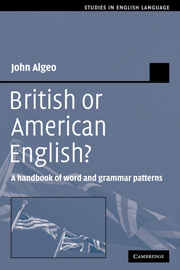Bibliography of studies, dictionaries, and corpora
Published online by Cambridge University Press: 08 January 2010
- Type
- Chapter
- Information
- British or American English?A Handbook of Word and Grammar Patterns, pp. 319 - 324Publisher: Cambridge University PressPrint publication year: 2006



